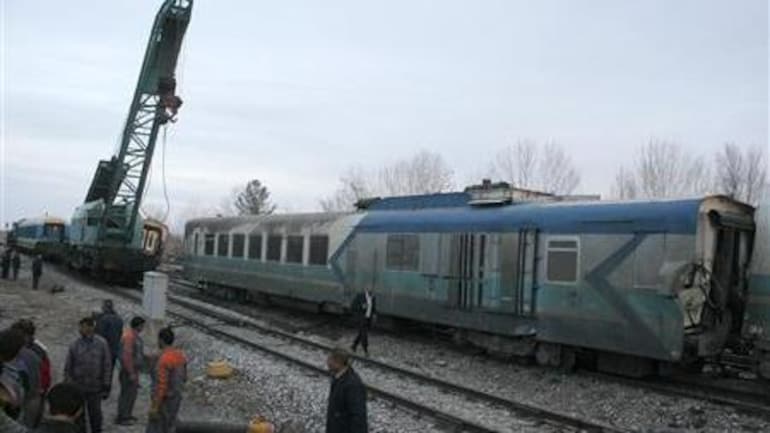Tehran: A passenger train partially derailed in eastern Iran early Wednesday, killing at least 17 people and injuring 50 more, including some critically, authorities said.
The report said the number of casualties could rise, though initial details about the disaster involving a train reportedly carrying some 350 passengers remained unclear.
Four of the seven cars in the train derailed in the early morning darkness near the desert city of Tabas, Iranian state television reported. Tabas is some 550 kilometers (340 miles) southeast of the capital, Tehran.
Rescue teams with ambulances and helicopters had arrived in the remote area where communication is poor. Over a dozen people suffered critical injuries, with some transferred to local hospitals, officials said.
Iranian media quoted the governor of Tabas, Ali Akbar Rahimi, as saying the crash killed at least 17 people and that the number of fatalities may rise as rescuers search the train cars.
Aerial footage of the desert site of the disaster showed train cars on their side, with some rescuers running at the scene as they tried to care for those injured.
State TV later aired images from a hospital where the injured received treatment. One of those injured told the broadcaster they felt the train suddenly brake and then slow before the derailment.
“Passengers were bouncing in the car like balls in the air,” said the injured passenger, whom state TV did not identify.
The derailment happened some 50 kilometers (30 miles) outside of Tabas on the rail that links the city to the central city of Yazd.
The report said the crash is under investigation. Initial reports suggested the train collided with an excavator near the track, though it wasn’t immediately clear why an excavator would have been close to the train track at night. One official suggest it could have been part of a repair project.
Iran’s worst train disaster came in 2004, when a runaway train loaded with gasoline, fertilizer, sulfur and cotton crashed near the historic city of Neyshabur, killing some 320 people, injuring 460 others and damaging five villages. Another train crash in 2016 killed dozens and injuries of scores of people.
Iran has some 14,000 kilometers (8,700 miles) of railway lines throughout a country about two and a half times the size of Texas. Its rail system sends both people and goods across the country, particularly in rural areas.
Iran also has some 17,000 annual deaths on its highways, one of the world’s worst traffic safety records. The high toll is blamed on wide disregard for traffic laws, unsafe vehicles and inadequate emergency services.
Iran, already straining under US sanctions over its collapsed nuclear deal, has been mourning the deaths of at least 41 people killed in a building collapse in the country’s southwest.
